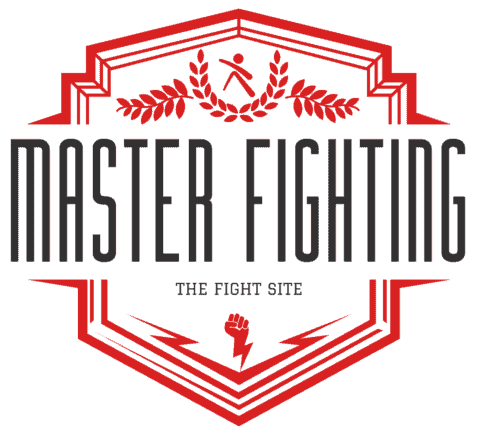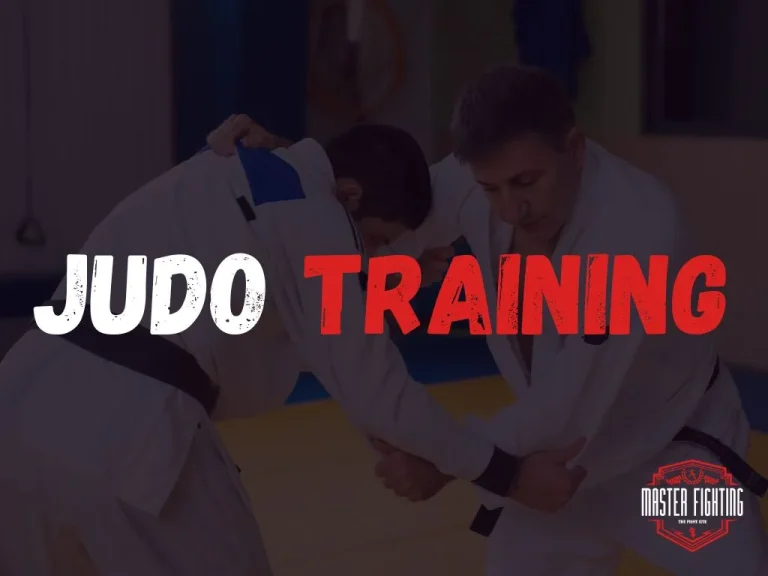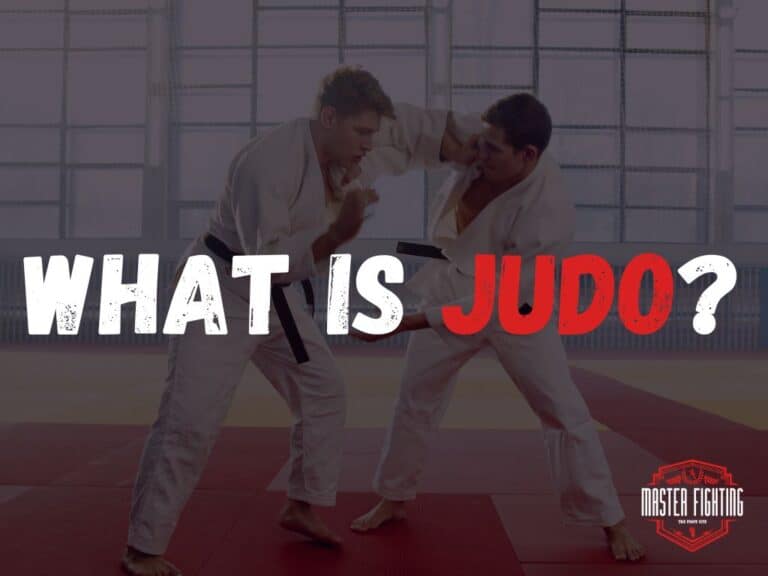Judo Grappling – Unlocking Techniques for Success
This article dives into the world of judo grappling, covering everything from fundamentals and advanced techniques to training and competition strategies.
The History of Judo Grappling
Judo grappling, a martial art that originated in Japan in the late 19th century, is a sport that emphasizes throws and grappling techniques to immobilize or subdue opponents. The founder of judo, Jigoro Kano, was inspired by traditional Japanese fighting styles and sought to create a modern form of martial arts that focused on using technique and leverage instead of brute strength. Kano’s vision for judo was to create not only skilled fighters but also better members of society through mental and physical discipline.
Judo was introduced to the world during the 1964 Tokyo Olympics, where it gained recognition as an official Olympic sport. Since then, it has grown in popularity worldwide and has become one of the most highly respected grappling martial arts.

What is Judo Grappling?
Judo grappling is a martial art that emphasizes throws and grappling techniques to gain control over an opponent. Unlike other forms of martial arts where striking techniques such as punches or kicks are used, judo focuses on using leverage and proper technique to throw or submit an opponent.
In competitions, points are awarded for successful throws or pins. In some cases, submission holds can be used to force an opponent into tapping out or conceding defeat.
Judo training also places a strong emphasis on mental discipline and respect for one’s opponent. Practitioners strive not only to develop their physical skills but also their ethics in order to become better individuals both on and off the mat.
Fundamentals of Judo Grappling
Basic Techniques and Movements Used in Judo Grappling
Judo grappling is a sport that involves a lot of technique and skill. Understanding the basic techniques is essential to your success on the mat. One fundamental movement in judo is footwork, which requires proper positioning and balance to execute effectively.
A good stance requires the fighter to have their feet shoulder-width apart, their center of gravity over their base, and their knees slightly bent. Another fundamental technique used in judo grappling is grip fighting.
This technique involves maintaining control over your opponent’s gi while preventing them from grabbing yours. By having control of your opponent’s gi, it allows you to execute throws or takedowns while preventing them from doing the same.
Importance of Proper Positioning and Balance in Judo Grappling
Proper positioning and balance are crucial when it comes to judo grappling. Without them, executing any techniques will be difficult if not impossible.
When grappling with an opponent, maintaining proper position can help prevent injury by minimizing the chances of being caught off-balance or falling awkwardly. Balance plays an important role in executing throws or takedowns effectively because it helps transfer energy into your strikes without losing stability.
A good way to improve your balancing skills is through drills such as standing on one foot or practicing footwork movements like pivoting on one leg. Understanding the fundamentals of judo grappling is essential for success on the mat.
Learning basic techniques such as grip fighting and improving balance through drills will help you build a solid foundation for more advanced techniques later on. Additionally, paying close attention to proper positioning and balance can help prevent injuries while allowing for greater effectiveness in executing throws or takedowns during competition.
Advanced Techniques in Judo Grappling
Throws and Takedowns Used in Competition
Throws and takedowns are a critical aspect of judo grappling, as they allow a practitioner to take control of the match and potentially score points. Some of the most commonly used throws in competition include hip throws, shoulder throws, foot sweeps, and sacrifice throws. Hip throws like O-goshi (major hip throw) involve using one’s hip to off-balance their opponent before throwing them onto their back.
Shoulder throws like Seoi-nage (shoulder throw) involve lifting one’s opponent onto their shoulders before slamming them into the mat. Foot sweeps can be performed by using your own leg to sweep your opponent’s leg out from under them.
Sacrifice throws such as Tomoe-nage (circle throw) require a practitioner to use their own momentum to fall backward while taking their opponent down with them. Takedowns are also an essential part of judo grappling’s arsenal.
Double-leg takedowns involve driving both arms around an opponent’s legs before lifting them off the ground and slamming them onto their back or side. Single-leg takedowns involve grabbing one of an opponent’s legs before tripping or sweeping the other leg out from under them.
Submission Holds and Chokes
In addition to takedowns and throws, submission holds and chokes are also utilized in judo grappling competition. These techniques aim at causing pain or discomfort on an opponent or rendering them unconscious. One common submission hold is Juji-gatame (cross arm lock), which involves trapping an opponent’s arm between your legs while applying pressure on the elbow joint with both hands.
Another example is Osae-komi-waza (hold-down techniques), where a practitioner aims at pinning their adversary on the ground for a set amount of time. Chokes are another critical category of submission holds in judo grappling.
The Hadaka-jime (rear naked choke) is a popular example of a choke, which involves wrapping one arm around an opponent’s neck and using the other arm to apply pressure to the opposite side of their neck. Overall, advanced techniques such as throws and takedowns, as well as submission holds and chokes, require years of practice to master successfully.
It involves understanding how your opponent moves and utilizing counters to their attacks while creating opportunities to execute these moves. Perseverance, patience, and precision are paramount in executing these techniques effectively in a competitive setting.
Strategy and Tactics in Judo Grappling
Importance of Timing and Distance Control
Timing and distance control are crucial elements in judo grappling that can make a significant difference between winning or losing a match. Proper timing is crucial when attempting throws, takedowns, or submission holds. Experienced grapplers often try to anticipate their opponent’s movements to execute techniques at just the right moment.
Timing is also essential to avoid counterattacks from the opponent. Distance control is another critical aspect of strategy in judo grappling.
Maintaining the correct distance from an opponent can allow a grappler to set up attacks more effectively while minimizing the chances of being taken down or thrown themselves. A skilled grappler knows how to use footwork, body positioning and posture, as well as grips on an opponent’s gi, to maintain proper distance.
Understanding Your Opponent’s Strengths and Weaknesses
In addition to timing and distance control, understanding your opponent’s strengths and weaknesses is essential in developing an effective strategy for judo grappling. An experienced grappler will analyze their opponent’s style of movement during warmups before the match starts.
This can provide valuable insight into what techniques might be most effective against them during competition. For example, if an opposing player has a powerful grip on their gi, it may be more challenging to execute throws that require breaking the grip first.
Alternatively, if an opposing player has a weak defense against certain types of takedowns or submissions holds, then a skilled grappler may capitalize on those weaknesses during the match. Overall, understanding your opponent’s strengths and weaknesses allows you to tailor your approach accordingly for maximum effectiveness in judo grappling matches.
The Importance of Flexibility in Strategy
It is important not to rely too heavily on any specific strategy when competing in judo grappling matches. Experienced grapplers understand the importance of flexibility in their approach, as each opponent will present unique challenges. The most successful practitioners of judo grappling are those who can adapt and switch to different strategies during a match.
For example, if a certain throw or submission hold is not working, a skilled grappler might opt for a different technique that takes advantage of their opponent’s weaknesses. In addition, sometimes taking the initiative and being more aggressive can put an opponent on the defensive and force errors that can be exploited.
Strategy and tactics in judo grappling involve timing and distance control, understanding your opponent’s strengths and weaknesses, as well as being adaptable to change tactics when necessary. These elements are vital for success in competitive judo grappling matches.
Training for Judo Grappling
Physical Conditioning Necessary for Success in Judo Grappling
Judo grappling requires a high level of physical fitness and strength. It is important to focus on developing strength in your core muscles, back, legs, shoulders and arms. This can be achieved through weight training or bodyweight exercises like pull-ups, pushups and squats.
Additionally, cardio training is essential as judo grappling can be very physically demanding. Running, swimming and cycling are great ways to improve cardiovascular endurance.
Another area to focus on is flexibility. The nature of judo grappling requires athletes to be able to contort their bodies into many different positions quickly and efficiently.
Tight muscles can limit range of motion and make certain techniques more difficult to perform effectively. Incorporating stretching into your training routine can help increase flexibility.
Drills to Improve Technique, Speed, and Agility
To improve technique in judo grappling, it is important to practice the fundamental movements used frequently in the sport. Drills that focus on throws, takedowns, sweeps and submission holds should be incorporated into training sessions regularly.
Training with a partner allows you to practice these techniques against resistance which will improve your timing and execution. Speed drills are also an important aspect of training for any athlete involved in judo grappling as they help develop quickness needed when reacting or initiating attacks during a match.
These drills involve practicing movements at a fast pace or performing timed sets of specific techniques. Agility drills like jumping over cones or crawling through obstacles help improve coordination which is essential when moving fluidly during matches.
They also help develop quick reactions which come in handy during matches where speed of reaction could make all the difference between winning or losing. Overall consistent practice with proper conditioning will lead towards success in judo grappling by improving an athlete’s physical abilities that support their technique and skill in the sport.
Competition in Judo Grappling
Judo grappling is a sport that is highly competitive, with athletes from around the world competing at various levels. The aim of each match is to score points or to win by submission. There are strict rules and regulations governing the sport, which ensure that matches are conducted safely and fairly.
Rules and Regulations for Competitive Judo Grappling
The International Judo Federation (IJF) governs judo grappling worldwide and sets rules for all competitions. Judokas compete in different weight categories, depending on their weight and size. Matches last for four minutes, with an additional time if there is no winner by submission or point scoring.
A match can be won in several ways; a player can score an ippon (one full point) by throwing his opponent onto his back with speed, force, and control; two waza-ari scores (half-point) also count as an ippon; players can also win by accumulating three shido penalties against their opponent. The referee plays a vital role in ensuring that matches are conducted fairly.
He has the power to award points or penalties based on the actions of both players during the match. Certain actions are prohibited in judo grappling such as grabbing an opponent’s leg below the knee to take them down or hold them down: this is known as “leg grabbing” and has been banned at elite level competition since 2010.
Strategies for Winning Matches
Winning a match requires not only technical proficiency but also tactical awareness. Each competitor must gauge their opponent’s strengths and weaknesses quickly when they enter the mat area. Players should always look for opportunities to throw their opponents while maintaining balance themselves.
Players who take risks often come out on top but must be prepared to defend themselves quickly if things don’t go according to plan. A good strategy is to keep the opponent off-balance, making them unsure of your next move.
Players can attempt to lure their opponents into a trap by pretending to be in trouble or encouraging them to attack aggressively. This tactic can create opportunities for the players to counter-attack and make a throw.
Another essential strategy is known as “kuzushi.” Kuzushi is the art of breaking an opponent’s balance before launching an attack. If executed correctly, the opponent will be off balance and unable to defend themselves effectively, allowing for an easy score or submission hold.
Kuzushi is achieved by using footwork, timing, and positioning. Judo grappling is a sport that requires skill in both technique and strategy.
Winning matches relies on understanding your opponent’s strengths and weaknesses while utilizing effective tactics. The rules and regulations governing judo grappling ensure that each match conducted safely and fairly.
Famous Practitioners of Judo Grappling
The Legendary Judoka: Yasuhiro Yamashita
Yasuhiro Yamashita is a retired Japanese Olympic judoka who is considered by many to be one of the greatest judo practitioners of all time. He was born in 1957 and started practicing judo at the age of five. Over the course of his career, Yamashita won seven world championships and four Olympic medals including a gold medal at the 1984 Olympics in Los Angeles.
What made Yamashita stand out was his sheer power and technique on the mat. He was known for his incredible grip strength, which he used to control his opponents with ease.
He also had an exceptional understanding of balance and timing, which allowed him to execute throws with precision and force. In addition to his athletic achievements, he has also been instrumental in promoting judo internationally.
The Female Powerhouse: Ronda Rousey
Ronda Rousey is a retired American mixed martial artist who gained popularity for her skills in judo grappling. She started practicing judo at a young age under her mother’s guidance who was also a professional judoka. After winning multiple medals as a teenager, she went on to compete in mixed martial arts where she became one of the biggest stars in the sport.
Rousey’s success can be attributed to her dominant style on the mat – once she took an opponent down, there was little they could do to stop her from submitting them with an armbar or choke hold. Her training as a judoka also gave her an advantage over other fighters when it came to throwing techniques and timing.
The Current Champion: Teddy Riner
Teddy Riner is a French heavyweight judoka who currently holds ten world titles and two Olympic gold medals. He was born in 1989 and started practicing judo when he was six years old.
Riner is known for his incredible size and strength, which makes him almost unbeatable in the heavyweight division. Despite his size, Riner is also incredibly agile and deeply understands balance and timing.
He is known for his ability to execute throws with ease, often launching his opponents several feet off the ground before slamming them down on their back. His dominance in the sport has made him a household name in France and has earned him international recognition as one of the greatest judoka of all time.
Final Thoughts
Judo grappling is a complex and fascinating sport that combines physical and mental toughness with strategic thinking. In this article, we have explored the history of judo grappling, basic techniques, advanced moves, strategy and tactics, training methods, competition rules, and famous practitioners in the sport. Judo grappling is a full-body workout that requires strength, flexibility and agility to execute techniques properly.
Conditioning drills such as running, weight lifting or plyometrics can help improve the physical attributes necessary for success in judo grappling. Training partners can simulate real matches by practicing takedowns or submission holds together.
The sport of judo grappling is also about learning how to interpret your opponent’s movements and adjust your own accordingly. This requires patience, discipline and focus to execute effective techniques while avoiding mistakes that could lead to defeat.
Judo grappling offers an exciting opportunity for anyone seeking a challenging athletic endeavor that combines both physical fitness and mental sharpness. With practice it can become more than just a hobby but potentially even unlock some hidden personal potential you never knew you had!

Author Bio
Hi, I am William. I started out in martial arts with Goshin Ju Jitsu when I was 7 years old. I am passionate about martial arts and love sharing everything I learn. I created Master Fighting to become a resource for learning about martial arts and alternative fighting styles. Learn more about me.



